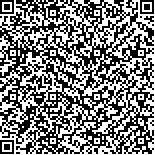| 摘要: |
| Toll样受体是一类重要的蛋白质分子,参与固有免疫系统,在哺乳动物在受到细菌感染的时候,TLR1和TLR2基因可以形成异源二聚体,进而启动宿主的固有免疫。本文应用实时荧光定量PCR的技术,检测了TLR1和TLR2基因在牙鲆健康组织以及牙鲆腹腔注射迟缓型爱德华氏菌(Edwardsiella tarda)后各组织中的表达变化,并探讨了它们与牙鲆(Paralichthys olivaceus)固有免疫反应的关系。结果表明,TLR1和TLR2基因广泛表达于健康牙鲆的各种组织中,其中,TLR1在脾脏组织中表达量最高,其次是心脏、肌肉;TLR2在小肠组织中表达量最高,其次是肝脏、心脏。免疫刺激实验表明,多数组织在感染病原6h后TLR1基因表达达到峰值,其中脾脏中基因的表达量最大,是0时间点的290倍(P<0.01)。TLR2基因在感染病原1h后在脾脏中表达量最高,为0时间点的17.8倍(P<0.01),在感染病原1d后心脏组织中基因的表达量为对照组的14倍(P<0.01),其余时间点表达变化不明显。结果表明TLR1和TLR2参与了牙鲆对迟缓型爱德华氏菌的免疫应答反应。实验结果还显示,在牙鲆感染迟缓型爱德华氏菌后,MyD88、TNF-α和IL-1基因的表达也都同步上调,暗示迟缓型爱德华氏菌有可能通过TLR1通路上调MyD88的表达,并最终导致炎症因子TNF-α和IL-1的基因表达上调,以应答病原菌的感染。 |
| 关键词: TLR1 TLR2 牙鲆 迟缓型爱德华氏菌 表达 实时荧光PCR |
| DOI:10.11693/hyhz20170200040 |
| 分类号:S917.4 |
| 基金项目:天津市自然科学基金重点项目资助,14JCZDJC34200号。 |
|
| EXPRESSION OF TLR1 AND TLR2 GENES OF JAPANESE FLOUNDER PARALICHTHYS OLIVACEUS INDUCED BY EDWARDSIELLA TARDA |
|
LI Qing-Ya1, ZHOU Mi1, ZHANG Jie1, ZHENG Jin-Hui1, GENG Xu-Yun2, PAN Bao-Ping1, SUN Jin-Sheng1,2, GAO Hong1
|
|
1.Tianjin Key Laboratory of Animal and Plant Resistance, College of Life Sciences, Tianjin Normal University, Tianjin 300387, China;2.Tianjin Aquaculture Disease Prevention & Treatment Center, Tianjin 300221, China
|
| Abstract: |
| Toll-like receptors (TLRs) are a class of proteins that play an important role in the innate immunity. Toll-like receptor 1 (TLR1) forms a heterodimer with Toll-like receptor 2 (TLR2) to recognize lipopeptides of pathogenic bacteria and initiate host innate immunity system. We detected the mRNA levels of TLR1 and TLR2 in various tissues of healthy or Edwardsiella tarda induced Japanese flounder Paralichthys olivaceus by quantitative real time reverse transcription-PCR (RT-qPCR) and discussed the roles of TLR1 and TLR2 in the innate immunity of P. olivaceus. The results indicate that TLR1 and TLR2 were widely expressed in various tissues of healthy P. olivaceus. The highest expression level of TLR1 was observed in spleen, followed by heart, muscle, liver, intestine, gills, and head kidney, and that of TLR2 in intestine, followed by liver, heart, muscle, gills, and spleen. Immunostimulation test shows that TLR1 transcript peaked in level 6h after E. tarda challenge in most tissues; the highest expression level soared to 92.2 fold increase (P<0.01) from that of the initial point in the spleen. Similarly, TLR2 transcript topped in 1h in the spleen for a 17.8 fold increase (P<0.01), and 14 fold increase (P<0.01) in the heart; and then the TLR2 expression stayed. These facts suggest that the TLR1 and TLR2 genes were involved in immune response to E. tarda infection. In addition, expressions of MyD88, TNF-α, and IL-1 genes were up-regulated after E. tarda challenge. Therefore, we believe that E. tarda could up-regulate MyD88 expression via TLR1 pathway and up-regulate ultimately the expression of inflammatory factors TNF-α and the IL-1 genes against pathogen infection. |
| Key words: TLR1 TLR2 Paralichthys olivaceus Edwardsiella tarda expression real-time PCR |
